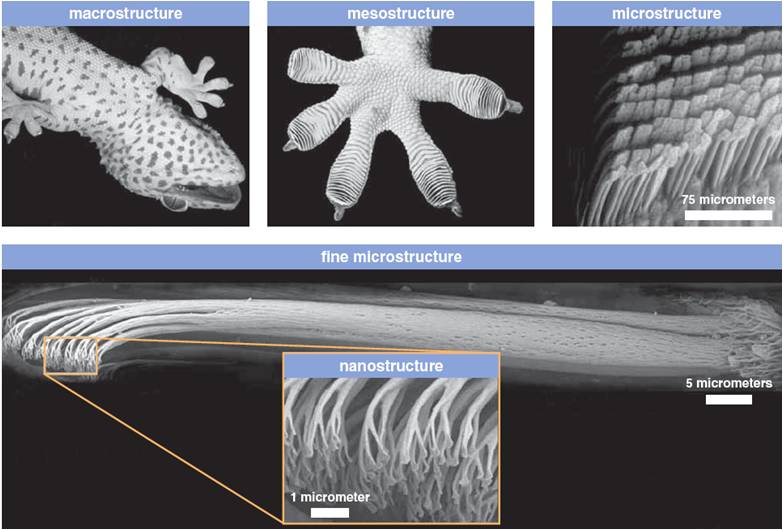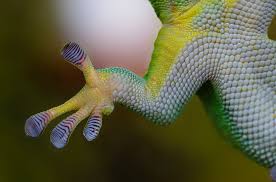Gecko Gets a Grip
science·@pinkspectre·
0.000 HBDGecko Gets a Grip
The gecko is a southern lizard with a renowned ability to adhere to many surfaces. But unlike the gripping mechanisms of other animals, which rely on claws or adhesive residues, the gecko's grip is due in part to a reversible molecular attraction that occurs on the specialized toe-pads of the lizard. scientists Tim Highman from Clemson University and Anthony Russel from the University of Calgary investigate this process to gain a better understanding of the biological actions taking place and to potentially mimic them for human uses.  Jazium. <a href="https://commons.wikimedia.org/wiki/File:Tame_Crested_Gecko.jpg">Wikimedia Commons</a> The researchers found that the gecko's unique pads confer a super gripping ability to the lizards; the pads contain a sea of microscopic structures called setae, which can be elongated. When the setae are activated, they confer a super-strong grip, which can withstand hurricane-force winds and and according to Highman, could even support the weight of a human, if the surrounding tissue were strong enough. The phenomena that makes such feats possible are electrostatic and Van der Waals interactions. Van der Waals forces are attractions and repulsions between atoms, molecules and surfaces caused by momentary fluctuations in the polarization of surrounding particles, which are in turn caused by interactions at the quantum level. Though these forces are very weak, when aggregated can support surprising loads. By combining the forces of millions of such interactions all along the setae, the gecko is able to grip much more effectively.  K Autumn.<a href="https://en.wikipedia.org/wiki/File:Micro_and_nano_view_of_gecko%27s_toe.jpg">Wikipedia</a> In tying to find out what triggers the super grip, the scientists discovered that the gecko's body orientation serves as the stimulus for setae activation. Rather than the result of the pads interaction with a surface, it seems to be a central nervous system response to the angle of surface inclination. This process would occur in the inner ear or brain of the animal it is supposed, but more research is needed. The biologists hypothesize that this trigger prevents unnecessary damage that could occur to the sensitive setae when the lizard is on a flat surface and adhesion is not needed, as well as allowing the gecko to run much faster on the ground.  <a href="https://www.maxpixel.net/Hand-Nature-Lizard-Animal-Sticky-Reptile-Gecko-800887">maxpixel</a> Russel and Highland speculate on possible human applications for the research, foreseeing a variety of valuable uses. Those in the medical field could benefit from wound closure applications, as the strong grip enabled by the Van der Waals forces could prevent wounds from reopening or becoming infected. The mechanism could be used for something as mundane as hanging a picture, of for more sci-fi sounding purposes, like allowing a military robot to scale walls. Source: "Gravity Governs the Gecko's Strong Grip", Ibby Cabuto. Washington Post, 2009.
👍 masuda, steem-network, oxiecuador, shamefulhasty, autostopper, whizart, enlil, adol, enki, bobnevv, calebchang, aasmck, donefezy, xeldal, kumluangdee, bunny, jidgabol, praditya, suzanrs, ivet, sara.yun, lulita, superacion50, mike-nascar, bashar-touma, marena5, seaberry, suman1987, james318, mr-sakariyau, kerry1, azulear, gamering, emotional, haywhysylv, hitmax, ijtiro, icee, kandywriter,